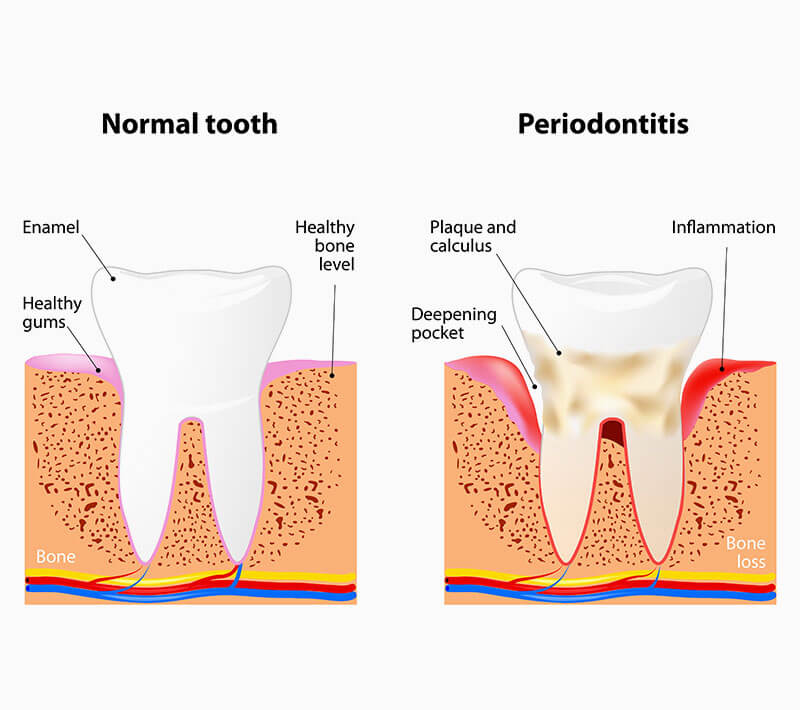
Gum Disease Fact Sheet
Periodontal disease (commonly known as gum disease)
Every comprehensive examination includes an examination of your gums. This helps us to differentiate whether you have gingivitis (inflammation of the gingiva/gums) or periodontitis (inflammation of the periodontium).
- What are the symptoms of periodontal disease?
- Bleeding, swollen and or red gums
- Receeding gums or teeth are getting longer
- Loose teeth
- Bad breath
- Gaps/spaces developing between teeth
What causes periodontitis
A combination of :
- Presence of plaque (an accumulation of bacteria)
- Being genetically susceptible
Periodontal disease can progress faster if you are a:
- Smoker – this is relative to the number of cigarettes consumed per day and for how many years.
- Diabetic – the better your blood sugar level control, the less impact this has on your gums. The condition of your periodontal disease can also impact your blood sugar level.
I have no pain, how did this happen?
When you have a build up of plaque and tartar (calcified deposits of plaque) around your teeth, the gums around the
teeth become inflammed.
This chronic process of inflammation can the development of deep pockets which then allow for more plaque and
tartar to accumulate under the gums. This inflammation can result in the loss of bone and ligaments around the tooth,
undermining the support (periodontium) of the tooth. In advanced cases of periodontitis, the teeth become loose.
Treatment
Just with all disease, it is better to prevent and treat early. We aim to control the periodontal disease and by doing so, will stop or slow the progression of the periodontal disease.
We treat the periodontal disease by removing the cause – the plaque and tartar. Since the tartar and plaque are hidden underneath the gums, then deep cleaning (periodontal cleaning) is required.
Following a course of periodontal treatment, then we will review the health of your gums 4-6 weeks later. By measuring the depth of the pockets around the teeth (periodontal charting), we are able to monitor any changes over time.
Most importantly, since build up of plaque and tartar is inevitable, regular maintenance visits and good home oral hygiene are required to control the progression of the disease.
After treatment you can expect…
- Reduction in bleeding
- Tightening of the gums around the teeth – you may notice gaps or slight gum recession
- Sensitivity – usually resolves over time
- Tenderness of gums


